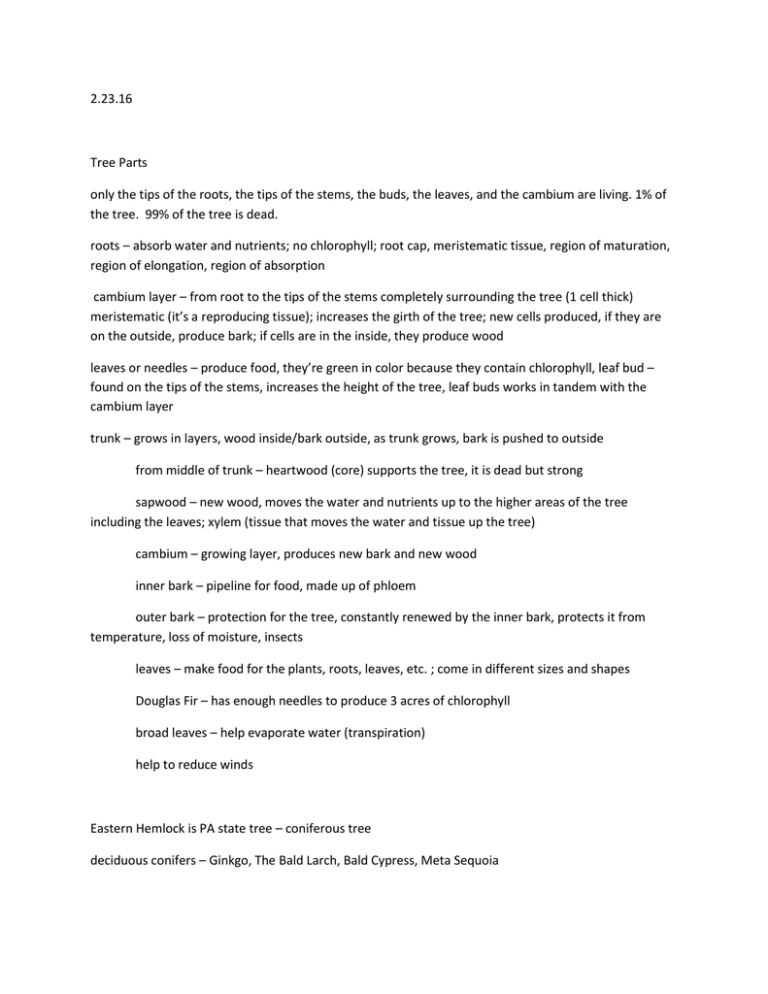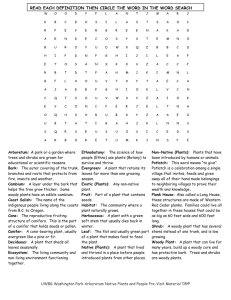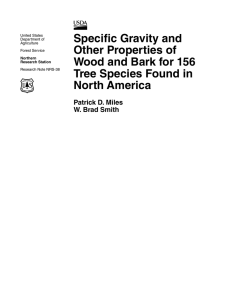2.23.16 Tree Parts
advertisement

2.23.16 Tree Parts only the tips of the roots, the tips of the stems, the buds, the leaves, and the cambium are living. 1% of the tree. 99% of the tree is dead. roots – absorb water and nutrients; no chlorophyll; root cap, meristematic tissue, region of maturation, region of elongation, region of absorption cambium layer – from root to the tips of the stems completely surrounding the tree (1 cell thick) meristematic (it’s a reproducing tissue); increases the girth of the tree; new cells produced, if they are on the outside, produce bark; if cells are in the inside, they produce wood leaves or needles – produce food, they’re green in color because they contain chlorophyll, leaf bud – found on the tips of the stems, increases the height of the tree, leaf buds works in tandem with the cambium layer trunk – grows in layers, wood inside/bark outside, as trunk grows, bark is pushed to outside from middle of trunk – heartwood (core) supports the tree, it is dead but strong sapwood – new wood, moves the water and nutrients up to the higher areas of the tree including the leaves; xylem (tissue that moves the water and tissue up the tree) cambium – growing layer, produces new bark and new wood inner bark – pipeline for food, made up of phloem outer bark – protection for the tree, constantly renewed by the inner bark, protects it from temperature, loss of moisture, insects leaves – make food for the plants, roots, leaves, etc. ; come in different sizes and shapes Douglas Fir – has enough needles to produce 3 acres of chlorophyll broad leaves – help evaporate water (transpiration) help to reduce winds Eastern Hemlock is PA state tree – coniferous tree deciduous conifers – Ginkgo, The Bald Larch, Bald Cypress, Meta Sequoia



